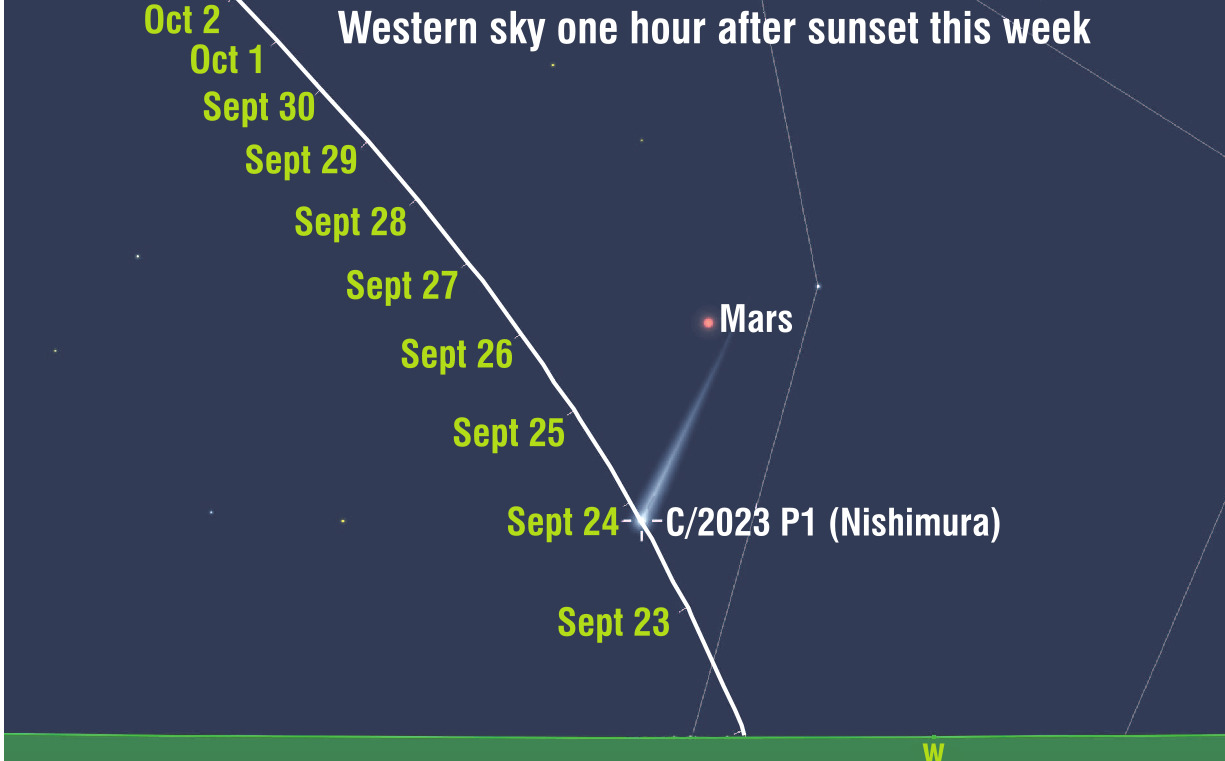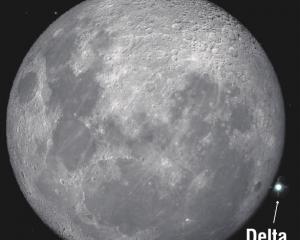
A shorter time between daytime and darkness is excellent news for local stargazers. That is because if skies are clear this week, there is a chance to spot a rare and possibly naked-eye comet shortly after sunset. The comet, called C/2023 P1 (Nishimura), was discovered on August 23 by Japanese amateur astronomer Hideo Nishimura.
With an orbital period estimated to be 406 years, the comet passed its closest point to the sun on September 17 and won't return to Earth's vicinity until 2430AD. There is some debate in the astronomical community about whether the comet will survive its close solar passage, so fingers crossed it does and we can see it as it becomes visible to astronomers in our hemisphere.
Finding comet Nishimura will be very tough. As well as interference from twilight, the comet's low altitude and light from the waxing gibbous moon will make it a hard object to spot. Binoculars will be essential, as will an observing location with an unobstructed view of the western horizon.
The comet is moving through the constellation Virgo. For the next few nights, Nishimura will be relatively close to the planet Mars in the sky, so we can use the red planet as a helpful guide to spotting the comet.
This evening (September 23), an hour after sunset, Nishimura will be just 2 degrees above the horizon, some 3 degrees below the red planet. The comet gets higher above the horizon with each passing night this week. Still, the positives of increasing altitude may well be overcome by the negative impact of interference from a progressively more illuminated moon.
With all this in mind, tonight and tomorrow may offer the best chance to spot this comet. Miss it, and you must wait four centuries to see it again!













